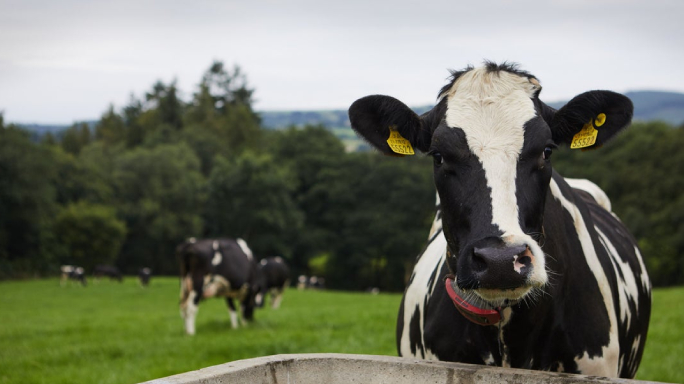Keep an eye out for nitrate poisoning in cows

Nitrate poisoning is caused by high nitrate levels in feed and it usually occurs particularly during a flush of growth after a dry period.
The signs of nitrate poisoning in cows can be vague and include:
- Staggering (like cows are drunk) due to lack of oxygen to the brain
- Muscle tremors
- Rapid fast breathing (to try and get more oxygen)
- Cows may salivate and froth at the mouth
- Bluish or chocolate brown colour of the mucous membranes
- Recumbent animals, can be large numbers at a time, death can occur quickly
- Eventually death through suffocation
- A cow can consume a toxic amount of nitrate in one hour, and will start to show signs very soon after
If you suspect your cows may have nitrate poisoning, call your veterinarian immediately and outline how many animals could be affected. Any animals still able to walk should be removed from the paddock and given a different source of forage such as hay together with a low protein/high energy concentrate.
High nitrate levels in forage are present when nitrate is taken up by the plant faster than it can be converted into protein by the plant. This can occur during times of low levels of sunlight, during dry spells or when temperatures drop as all of these scenarios reduce plant energy levels to convert nitrate into protein. Nitrate uptake from the soil can be accelerated following recent dry conditions when plant growth picks up again. A similar process is seen in newly reseeded pasture. Low soil pH, high nitrogen levels from white clover, sulfur or phosphorus soil deficiencies and low molybdenum also increase nitrate uptake by plants. Using high levels of nitrogen fertiliser late in the season can predispose plants to nitrate accumulation, particularly if grazing soon after application and before full dry matter response. However, nitrate levels can get high without using nitrogen fertiliser.
Reducing the risk of Nitrate poisoning in cows:
- Forage samples can be tested via a lab
- Avoid putting hungry stock onto risk feed; give safe feed such as hay or silage first
- Check animals 1-2 hours after turning out on lush or recently fertilised pasture.
- Acute nitrate poisoning symptoms will show within an hour or two of eating nitrates; Monitor stock and call a veterinarian at the first signs of trouble
- Feed risk crop late in afternoon as sunshine will reduce nitrate levels
- Wilting high nitrate pasture before grazing will not reduce nitrate levels. Making silage will not drop nitrate levels, but may be a way to manage high nitrate pasture that needs to be grazed.
- Don’t let animals graze kale, rape or ryegrass too hard: the plant parts closest to the soil (stem) contain the highest concentration of nitrate
Always notify your Tirlán Milk Supply Manager when cows die unexpectedly on your farm and we can assist you in working through such a challenging event.
First Published 22 May 2023
Tagged with: Dairy
